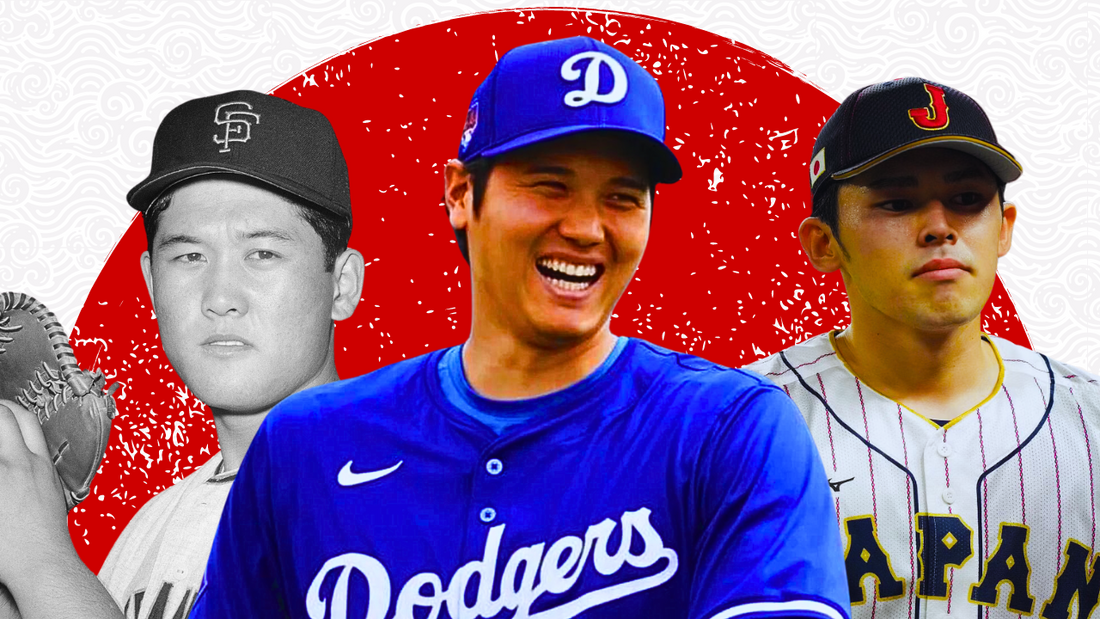Japan has a rich baseball history and is home to one of the best professional leagues in the world. Japan is the reigning champion of the World Baseball Classic and home to the best player in the world, Shohei Ohtani.
Japanese players have found success in Major League Baseball for a long time. Specifically, Japanese pitchers have been effective in the MLB, with more and more Japanese players making the leap to the big leagues over the past 30 years.
MLB fans have come to identify Japanese pitching by unique and often deceptive deliveries and a variety of pitches, including some of the deadliest splitters and forkballs the league has even seen. But despite the success of Japanese players in America, there are still only a handful of active Japanese players in Major League Baseball. As of today, there are 11 players from Japan, 9 of whom are pitchers. But those pitchers are not just any average big leaguers, the group includes some of the best pitchers in the world.
This newest generation of Japanese pitchers features more velocity than ever, with the likes of Ohtani, Kodai Senga, and now Yoshinobu Yamamoto offering a repertoire of 100 mile-per-hour fast balls with unhittable off-speed pitches.
But how did Japanese pitching in the MLB get to where it is today? Let’s take a quick look. But first, to help the channel grow, please subscribe, and thank you.
Masanori Murakami was the first Japanese-born player in Major League Baseball—a relief pitcher that made 54 appearances over two seasons in 1964 and 1965 for the Giants. Murakami’s brief stint in America was groundbreaking, and the MLB wouldn’t see another Japanese-born player for 30 years.
That player was Hideo Nomo, a true pioneer of Japanese baseball in America. Nomo arrived in the MLB in 1995, when he was both an all-star, and the rookie of the year, and he placed 4th in the Cy Young voting in his first season after a league leading 236 strikeouts and 2.54 ERA. He would go on to a productive 12 years in the MLB. Nomo had one of the most unique deliveries in the league, which was difficult to time and track. His mid-90s fastball at his peak and deadly splitter were both effective pitches.
There are too many Japanese pitchers to mention in this video. But a few that followed Nomo included reliever Shigetoshi Hasegawa, who pitched 9 seasons and was named to an all-star team. Kazuhiro Sasaki had a 4-year stint with the Mariners. But was a two-time all star and rookie of the year during that span. Sasaki had a classic Japanese splitter that struck out many during the Mariners’ 116-win season in 2001.
One of the most hyped Japanese pitchers to come to America was Daisuke Matsuzaka, who had an 8-year MLB career between 2007 and 2014. His career was up and down, but Dice-K had an excellent season in 2008 and was part of the Red Sox 2007 world series team.
In the 2000s and 2010s there were several other Japanese pitchers that found success. Hiroki Kuroda, Koji Uehara (Kogee Ooohara), Takashi Saito, and Hisashi Iwakuma, just to name a few, had solid careers. But in the case of each those pitchers, they came to America in their 30s, and were not overpowering pitchers. Each used a wide range of pitches and unique delivery to make solid careers in Major League Baseball.
For a variety of reasons, including the success of previous Japanese players and evolution to CBA and posting rules, some of the best Japanese players in the league today came to America earlier in their careers.
In 2014, Masahiro Tanaka came to the MLB with as much hype as any Japanese pitcher before him. At 25 years old, Tanaka was signed by the Yankees to a 7-year, $155 million deal, not to mention a $20 million posting fee to his Japanese team, the Tohoku Rakuten Golden Eagles. Tanaka had been unhittable in Japan, with an almost unbelievable 24-0 record and 1.27 ERA in 2013.
Tanaka was good for the Yankees, making two all-star teams in 7 seasons. His best seasons were early in his time with the Yankees, but he never dominated in the way that we’ve seen from some of the current Japanese players. Tanaka had a devastating split finger like many of his predecessors along with four other pitches. His fastball sat between 92 and 93 mph during his career.
Veteran Yu Darvish has 11 successful seasons in America with five all-star appearances and 2 second-place finishes in the Cy Young. Kenta Maeda has also carved out a solid career, and finished 2nd in the Cy Young voting for 2020. Both came to the MLB with less hype than Tanaka and others, but have been effective pitchers with elite seasons. They have been key to the transition to the next phase of Japanese pitchers.
Now, in 2024, the Japanese pitchers in Major League Baseball are the best that we’ve seen, and among the very best in the world. What we are seeing now is the next stage in the evolution of Japanese pitchers and players that have been brought up specifically for success in America.
Shohei Ohtani has dominated at the plate and on the mound. Ohtani, of course, suffered a UCL tear in 2023, and will not pitch in 2024. But he is expected to pitch in 2025, and his career so far has included 86 starts and a 3.01 ERA. At his peak, he is one of the very best pitchers in baseball with one of the hardest fastballs in the league.
Kodai Senga made an impressive jump to Major League Baseball last season. Like Ohtani and other new generation Japanese players, Senga has overpowering velocity with an average fastball at 96 mph and the ability to touch 100. Senga made 29 starts and finished with a 2.98 ERA, good enough for 7th in the NL Cy Young Voting. Senga’s best pitch is his “ghost fork,’ which has been called the nastiest pitch in baseball. [SHOW]
And now, Yoshinobu Yamamoto enters the league with a similar profile. Yamamoto is not physically big, but can touch 99 on his fastball with a nasty splitter. Yamamoto is projected to have a wider arsenal than Senga with better command. And of course, Yamamoto comes to the major leagues at a much younger age than Senga, and has the potential to put together a very long career. The Dodgers had so much confidence in his ability that they committed to 12 years and $325 million, with a posting fee of approximately $50 million.
For Senga and Yamamoto, we see classic Japanese mechanics that are efficient and often deceptive. Yamamoto has a quick windup that he often mixes up with pauses. With both, we see that use of a devastating splitter or forkball with their own variations. But now we also see overpowering fastballs and players that have been prepared for Major League Baseball. And the results are lethal.
There is every indication that Japan will continue to produce elite players. Yamamoto and Shota Imanaga are expected to have a big impact for their teams this season. And teams are already closely watching Japanese sensation Roki Sasaki. The 22-year-old flamethrower who is dominating in Japan with a 100-mph fastball, 92 mph slider, and an unhittable splitter.
Japanese players are firmly established in Major League Baseball history. As baseball has evolved in America, Japanese baseball has developed. While the active Japanese player pool in the MLB is small, it is elite, and there is little doubt that Japan will continue export elite pitchers to the MLB for years to come.

